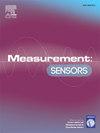数字力传感器及其校准的挑战
Q4 Engineering
引用次数: 0
摘要
传统的力测量链由力传感器本身、连接电缆、带接口或显示测量数据的放大模块组成。智能传感器是所有组件的组合,即传感元件,放大器模块和接口组合在一个单元中。因此,新型数字传感器是测量链,在校准过程中需要注意。本文章由计算机程序翻译,如有差异,请以英文原文为准。
Digital force sensors and challenges for their calibration
The traditional force measurement chain consists of the force transducer itself, a connection cable, an amplifier module with interface or display to give out the measurement data.
Smart sensors are a combination of all components, meaning the sensing element, the amplifier module and the interface are combined in a single unit. Therefore, the new digital sensors are measurement chains which require some attention concerning the calibration procedure.
求助全文
通过发布文献求助,成功后即可免费获取论文全文。
去求助
来源期刊

Measurement Sensors
Engineering-Industrial and Manufacturing Engineering
CiteScore
3.10
自引率
0.00%
发文量
184
审稿时长
56 days
 求助内容:
求助内容: 应助结果提醒方式:
应助结果提醒方式:


